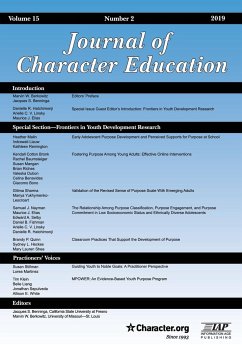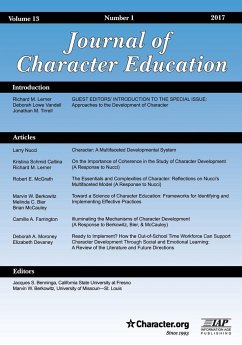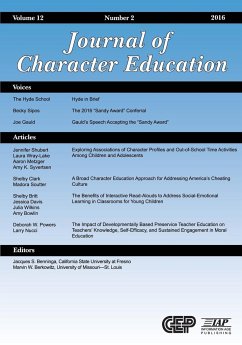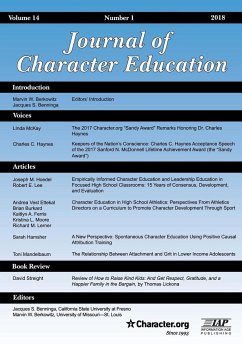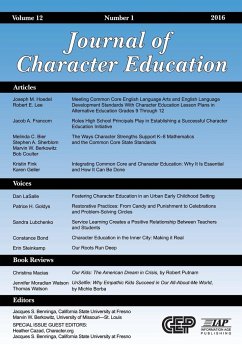The Journal of Character Education is the only professional journal in education devoted to character education. It is designed to cover the field-from the latest research to applied best practices. We include original research reports, editorials and conceptual articles by the best minds in our field, reviews of the latest books, and other relevant strategies and manuscripts by educators that describe best practices in teaching and learning related to character education. The Journal of Character Education has for over a decade been the sole scholarly journal focused on research, theory, measurement, and practice of character education. This second issue of 2019 volume of the Journal of Character Education is a guest-edited themed issue, something that has become a frequent feature of the JCE. We are grateful to Danielle Hachimonji, Arielle Linsky, and Maurice Elias for both proposing and executing an exciting collection of scholarly and practitioner articles focusing on educating for purpose, particularly in adolescence. The work of the Social-Emotional and Character Development (SECD) Lab at Rutgers University and its MOSAIC project centers on student Positive Purpose, social-emotional skills, and inspiring students to become their "best selves" in order to make contributions to their school, the community, and the wider world. The MOSAIC project is represented by the paper in this collection authored by Samuel Nayman and others from their team.
Hinweis: Dieser Artikel kann nur an eine deutsche Lieferadresse ausgeliefert werden.
Hinweis: Dieser Artikel kann nur an eine deutsche Lieferadresse ausgeliefert werden.

